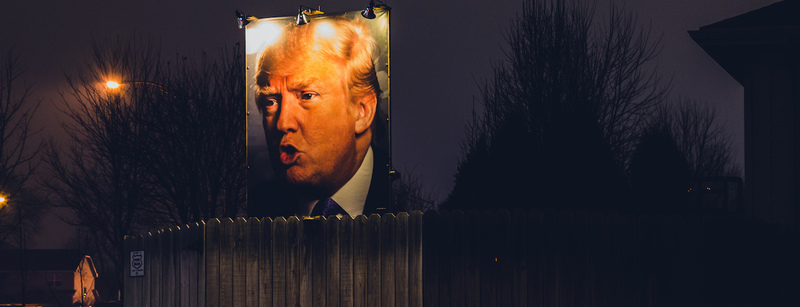This was supposed to be a column highlighting the best journalism of the 2016 campaign. Politico already ran its version of this self-indulgent staple as a 16-item, Washington insider-drenched collection of “breakout media stars” that included 14 white people and Breitbart News, Donald Trump’s ethno-nationalist Pravda. Poynter compiled its list from a public survey. But that, too, opened it to distortion, which some journalists obliged by asking their audiences to vote. “It would be the most fitting thing in the world if we won these awards due to scamming an online poll,” quipped Jody Avirgan, host of the FiveThirtyEight Elections podcast that eventually won for “Best Political Podcast.” What a gas!
Let’s try to remember what it was like before November 8. After a year of humiliation at the hands of the authoritarian-leaning Republican presidential candidate, the media had finally decided it needed to punch Donald Trump in the mouth. Journalists were going out of their way to emphasize his hypocrisy, “lies,” and disregard for political norms, and public opinion polls and election forecasters seemed to validate this oppositional stance by showing a sizeable Hillary Clinton cushion. It took a while, but a chagrined media had finally adjusted somewhat to this unique threat to American democracy. The long national nightmare of covering a candidate who personifies the antithesis of honest journalism would soon be over.
Or so we all thought. It feels as if we’ve collectively aged years over the past three days, as a cascade of takes on what the hell journalism got wrong has distracted the press from the important work of figuring out how to cover a potentially dangerous Trump presidency. We’ve done what we do best: made the story of 2016 about ourselves. Narcissistic self-immolation is the ideal form of suicide for an industry distrusted by the public but thirsty for post-election content.
Narcissistic self-immolation is the ideal form of suicide for an industry distrusted by the public but thirsty for post-election content.
We did get it wrong—the election, that is. Reporters trusted the forecasters too much and heeded Nate Silver’s warnings about unpredictability too little. Journalists’ bias toward professional political campaigns and our assumption that the arc of the moral universe bends toward cosmopolitanism blinded us to Trump’s appeal. Perhaps more crucially, we all underestimated the alienation felt by the Bernie Sanders wing of the Democratic Party and the civic apathy of the public in general.
But to say the media missed some seismic shift in American political culture goes too far. Clinton won the popular vote; President Obama’s approval rating is sky high; and the winning GOP candidate this cycle received fewer votes than his losing predecessor in 2012. National journalists filed so many dispatches from Trump country that the genre coalesced into a recurring joke on Twitter. That reporting came in addition to strong and copious accountability work that exposed Trump as a grifter who jokes about sexual assault and Clinton as a uninspiring politician surrounded by a shady personal network.
Related: Journalism’s moment of reckoning has arrived.
This is a column about reviewing campaign journalism, however, so here goes: The performance of “the media” in 2016 was…mixed. The Washington Post allowed David Fahrenthold to dig deep on Trump’s lack of charitable giving, but it also provided a huge platform for amoral political hot takes. The New York Times found that Trump didn’t pay income taxes for years, yet it also plastered the FBI’s faux re-investigation of Clinton’s email server across every column above the fold 10 days before the election. The Associated Press exposed the foreign connections of Trump’s former campaign chairman, but it also published a smoke-but-no-fire report that strongly implied Clinton sold State Department access through her eponymous charitable foundation. For all the clear-eyed work done by digital-only players—BuzzFeed News, The Daily Beast, The Intercept, Slate, and others—there was also cable news, where journalists like Jake Tapper competed for attention with talking heads such as Corey Lewandowski.
To say the media missed some seismic shift in American political culture goes too far.
It’s a complicated web of data points that media historians will sift through for years to come. And it provided fodder for a self-punishing narrative that leaves a lot to be desired: first the media “created” Trump with wall-to-wall TV coverage in the primary; then the press became an opposition force against Trump in the general election; and now Trump’s victory has exposed how woefully out of touch we are with the nation—er rather, the 25 percent or so of eligible voters who actually cast ballots for him. To put it another way, aspects of this riveting meta storyline are true, but not necessarily for the reasons that latte-sipping pundits in New York green rooms, who have a vested interest in bashing actual reporters, proclaim.
This makes my job harder, as you can surely tell from this obviously failed roundup of the campaign’s best work. I’ll comfort myself by thinking of it as a protest vote against the prevailing narratives. Journalism was not as bad in 2016 as many critics have said, and it wasn’t as good as some of its defenders are saying now. We should all strive for improvement, regardless. If nothing else, the next four years will provide us ample opportunities to regain public trust—and a greater need than ever for good journalism.
David Uberti is a writer in New York. He was previously a media reporter for Gizmodo Media Group and a staff writer for CJR. Follow him on Twitter @DavidUberti.

